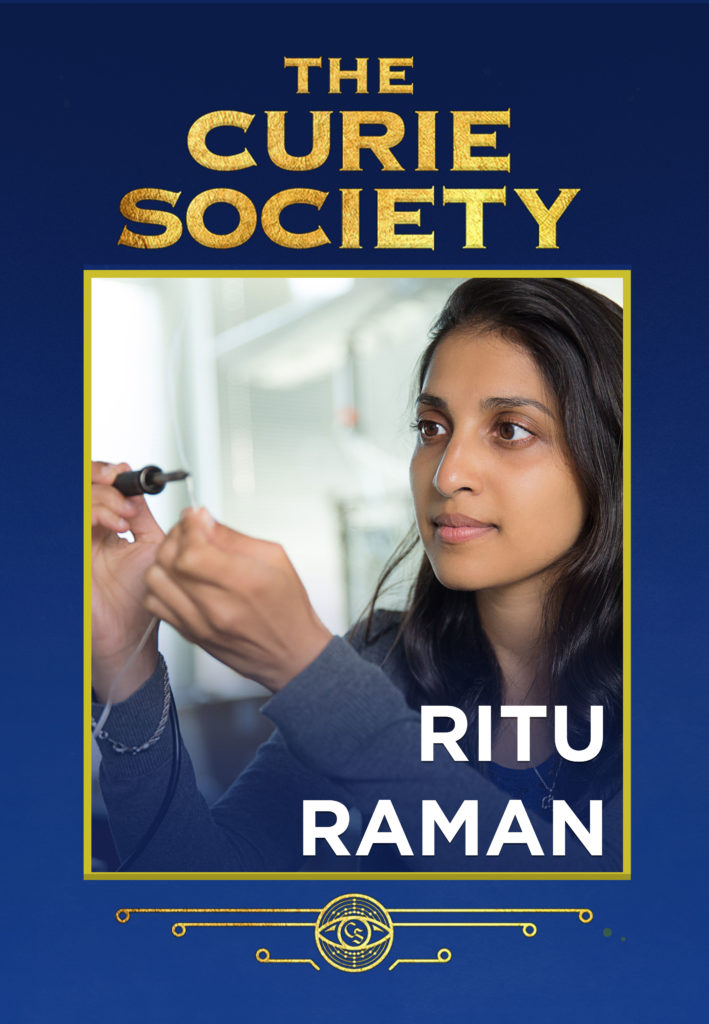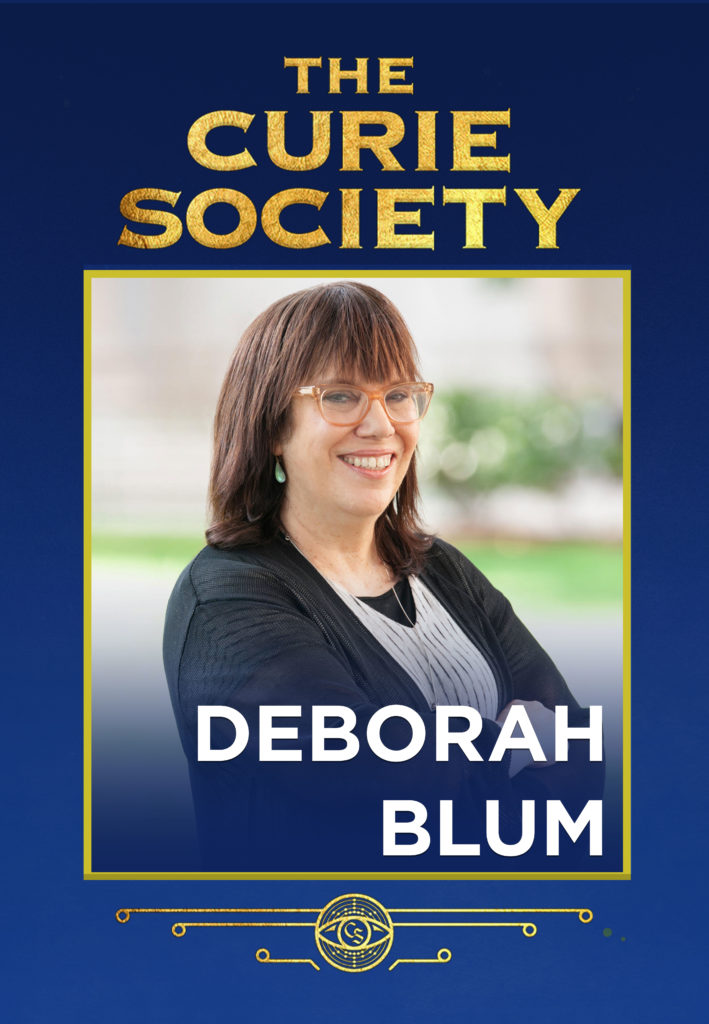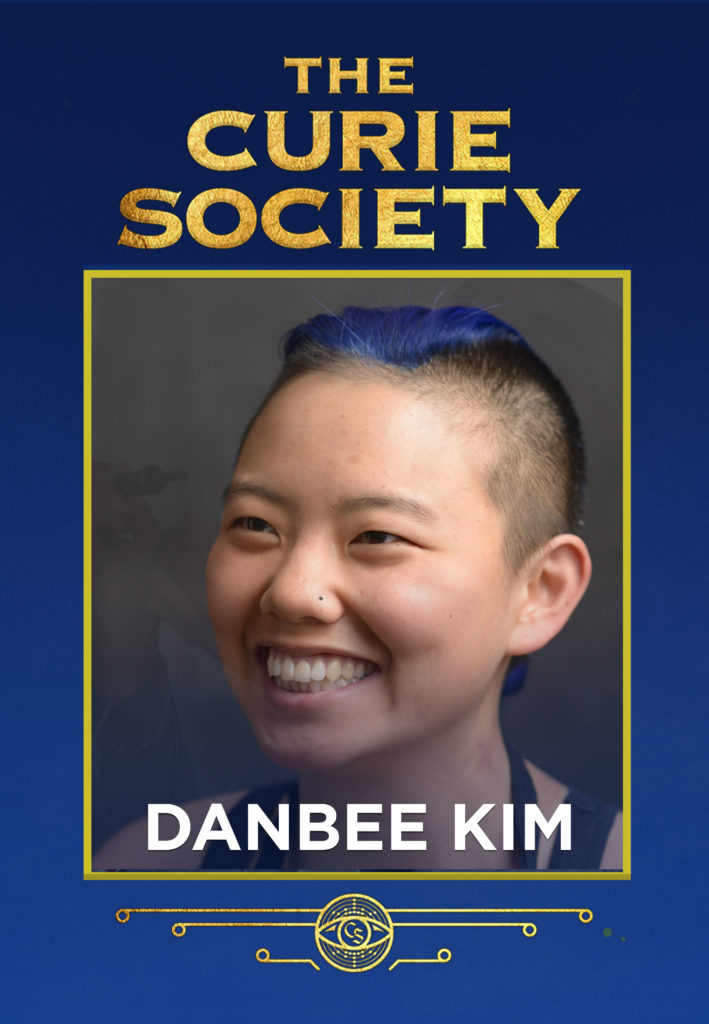International Day of Women in STEM + The Curie Society OGN
International Day of Women and Girls in Science was established by the UN General Assembly in 2015, and aims to celebrate women’s excellence in science while reminding the international community that science and gender equality have to advance hand-in-hand to address major global challenges. These topics have been top of mind here at EEP as we prepare to launch our newest graphic novel in partnership with MIT Press.
The Curie Society follows a team of young women recruited by an elite secret society—originally founded by Marie Curie—with the mission of supporting the most brilliant female scientists in the world. The heroines of the Curie Society use their smarts, gumption, and cutting-edge technology to protect the world from rogue scientists with nefarious plans.
The Curie Society is not only packed with action and adventure, but it’s filled with real science too. To make that happen, EEP partnered with a team of science advisors, women who are at the top of their fields. And what better way of celebrating this important day than by highlighting these science heroes who have helped craft our new novel into a work that is not only thrilling, but inspires young women to explore the possibility of becoming the next generation of women scientists.
We gave three of our science advisors advance copies of The Curie Society. Check out what they had to say about the secretive and scientific world of The Curie Society, and make sure that you get the epic graphic novel as soon as it arrives; pre-order from The MIT Press today!

(Image courtesy of L’Oreal USA.)
Dr. Ritu Raman is an engineer, writer, and educator with a passion for biohybrid design: building machines powered by biological materials. She develops implantable robots that dynamically sense and adapt to the human body and help fight disease and damage. Ritu grew up in India, Kenya, and the United States. This taught her to thrive in dynamic environments, and inspires her to diversify STEM education. Ritu is currently a postdoctoral fellow at MIT. She received her B.S. from Cornell University, and her M.S. and Ph.D. from the University of Illinois at Urbana-Champaign. Here’s what she had to say about The Curie Society:
I love the core message [of the Curie Society,] that science is not a superpower. It is a learned skill that anyone can develop with curiosity and hard work. Sometimes the hard work can feel boring, like the “lab drills” training montage in this story, but eventually it pays off and the skills come in handy!
One of the common stereotypes that makes science feel inaccessible to many people is that scientists are portrayed as antisocial geniuses who know everything about everything and never ask for help. I love that the Curie Society shows us that science is a team sport where each player cultivates their own expertise and works in teams to address big problems. That is how real science is done. It requires being good at your own thing and recognizing and valuing expertise in others.
“…the Curie Society shows us that science is a team sport where each player cultivates their own expertise and works in teams to address big problems. That is how real science is done.”
– RITU RAMAN
[I] really appreciate how this story casually highlights women in STEM like Ada Lovelace, Emmy Noether, Hedy Lamarr, Mildred Dresselhaus, Mary Jackson, Chien-Shiung Wu, Grace Hopper, Caroline Herschel… and of course Marie Curie. These types of everyday references to heroes whose contributions have been largely unknown and uncelebrated are what it will take to change the culture and show people that women have a lot to contribute to STEM fields.
The Curie Society shows us so many different types of multidimensional women who are great at STEM and are at different stages of their careers. Everyone can find something relatable in aspects of one or more of the characters. I felt a particularly strong connection to Simone, as I could relate to her discomfort at being younger than others in my class, as well as her attachment to animals! I also loved how Maya learned that you can be ambitious and confident while respecting your team and elevating those around you.
My favorite quote:
“Yes you failed, but failure is a part of the scientific process…”
– from the pages of The Curie Society
This is absolutely a fundamental lesson and I love that the Curie Society highlights this message for people interested in STEM! Science is about learning from failure and persevering in the face of daunting challenges. It teaches us that resolve is rewarding, and reinforces the lesson that being a good scientist requires curiosity and hard work, not innate genius.
The Curie Society did a great job of highlighting many emerging areas of scientific innovation. I especially liked how each innovation was accompanied by an explanation of the fundamental scientific principles as well as a description of potential real-world applications. It shows that basic science research can have tremendous worldwide impact.
Ethics is a core piece of any STEM research, and I really appreciate that the Curie Society centers this narrative. The ethics/bioethics discussions in this story highlight the importance of thinking of the consequences of your research and planning ahead to safeguard against possible negative outcomes. The discussions also showcase that ethics is deeply personal – different people have different outlooks on “good” and “bad” that are driven by their personalities and backgrounds. The key is to have these discussions openly with a diverse group of people inside and outside STEM so that we can work as a team to do safe, ethical, and impactful science.

Deborah Blum, director of the Knight Science Journalism Program at MIT, is a Pulitzer-prize winning American science journalist, columnist, and author of six books, including the 2018 New York Times Notable Book, The Poison Squad, and the New York Times best-seller, The Poisoner’s Handbook (2010). She has written for publications including The New York Times, The Washington Post, The Wall Street Journal, Scientific American, and Wired. She is currently publisher of the award winning digital science magazine, Undark and serves on the advisory boards of Chemical & Engineering News and The Scientist. Here’s what she had to say about The Curie Society:
“In The Curie Society, a trio of brilliant young crime-solving researchers find that science is both discovery and self discovery. The result for the lucky readers is one addictive adventure – with, I hope, more to come.”
— Deborah Blum, Pulitzer-prize winning science writer and director of the Knight Science Journalism Program at MIT

Dr. Danbee “Tauntaun” Kim is a Korean-American neuroscientist and teacher developing a framework for precisely observing nervous systems in increasingly natural environments and contexts, aka “field neuroscience”. This includes studying cuttlefish, building interactive exhibits, and using comics and dance as a tool for education and research. Tauntaun believes that art plays an important role in organising and building knowledge, as a tool for helping experts across specialities collaborate and share insights. She earned her BSc in Brain and Cognitive Sciences from MIT, where she also spent 10 years acting, directing, choreographing, costume designing, and writing original content for the MIT Musical Theater Guild. While earning her PhD from the Champalimaud Centre for the Unknown, Tauntaun continued to connect science with art as a musician, capoeirista, and author of a graphic novel version of her PhD thesis called The First VIRS. Here’s what they had to say about The Curie Society:
Wow, I read this all in one sitting and finished hungry for more! The characters have a ton of depth and are diverse without resorting to stereotypes in appearance or behavior. Their relationships are thoughtfully crafted, highly relatable, and so emotionally compelling.
I love that the plot really centers women in all of their shades and flavors — strong, vulnerable, ambitious, repentant, curious, jaded, hopeful, cautious, and bold. This is a bit spoilery — I also love that the villains/opposing forces are also women who have a slightly different view of how to empower themselves. The story has an amazing mix of global intrigue, interpersonal struggles, scientific depth, and moments that feel so real that I cried or squee’d or both at the same time.
The art did an amazing job of drawing me in, and had a uniquely smart style while reminding me of classic watercolor comics. Thank you so much for creating this beautiful story!
“The story has an amazing mix of global intrigue, interpersonal struggles, scientific depth, and moments that feel so real that I cried or squee’d or both at the same time.”
– DANBEE “TAUNTAUN” KIM

